Gluten-Free Vegan Puff Pastry
This gluten-free vegan puff pastry is as good or better than anything you’ll find at the grocery store. It’s flaky and buttery, despite not having any dairy. And it’s a lot of fun to make!
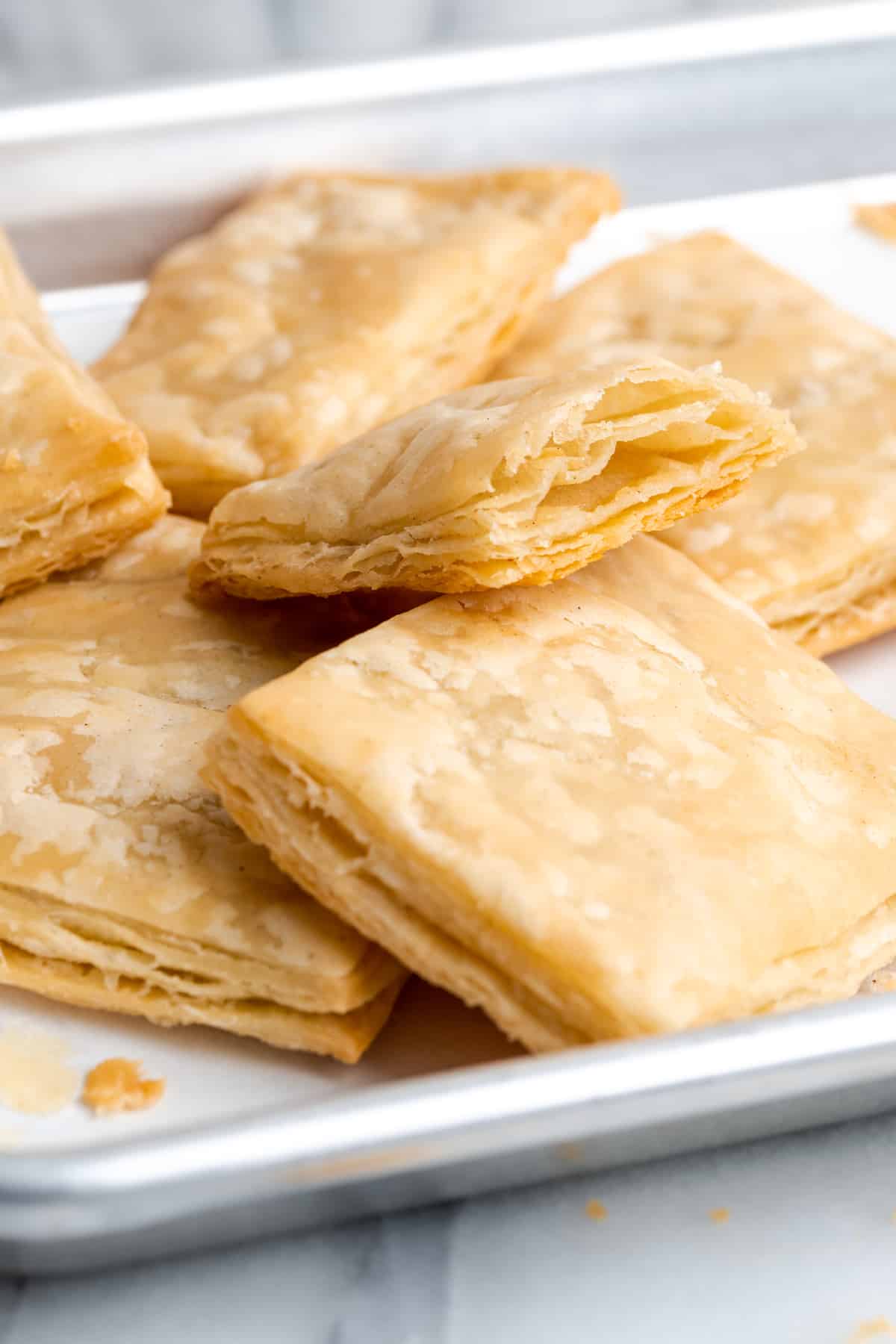
Puff pastry dough is a really fun ingredient to keep in your freezer. Whether you’re making something savory, like a wellington, or something sweet, like a turnover, puff pastry dough is the secret to a lot of great recipes. Most people buy their puff pastry dough at the grocery store, since that’s cheap and easy. But unfortunately, store-bought dough is full of gluten and dairy. That’s why I came up with this gluten-free vegan puff pastry recipe.
This puff pastry recipe is just as flaky and buttery as the kind you might buy at the store, despite only using dairy-free butter. And gluten-free flour blend works perfectly as a substitute for the standard flour found in most puff pastry recipes. It’s a little bit of a labor of love to make puff pastry dough, but I think it’s totally worth it. It can be lots of fun, and you’re left with a pretty awesome product to cook with.
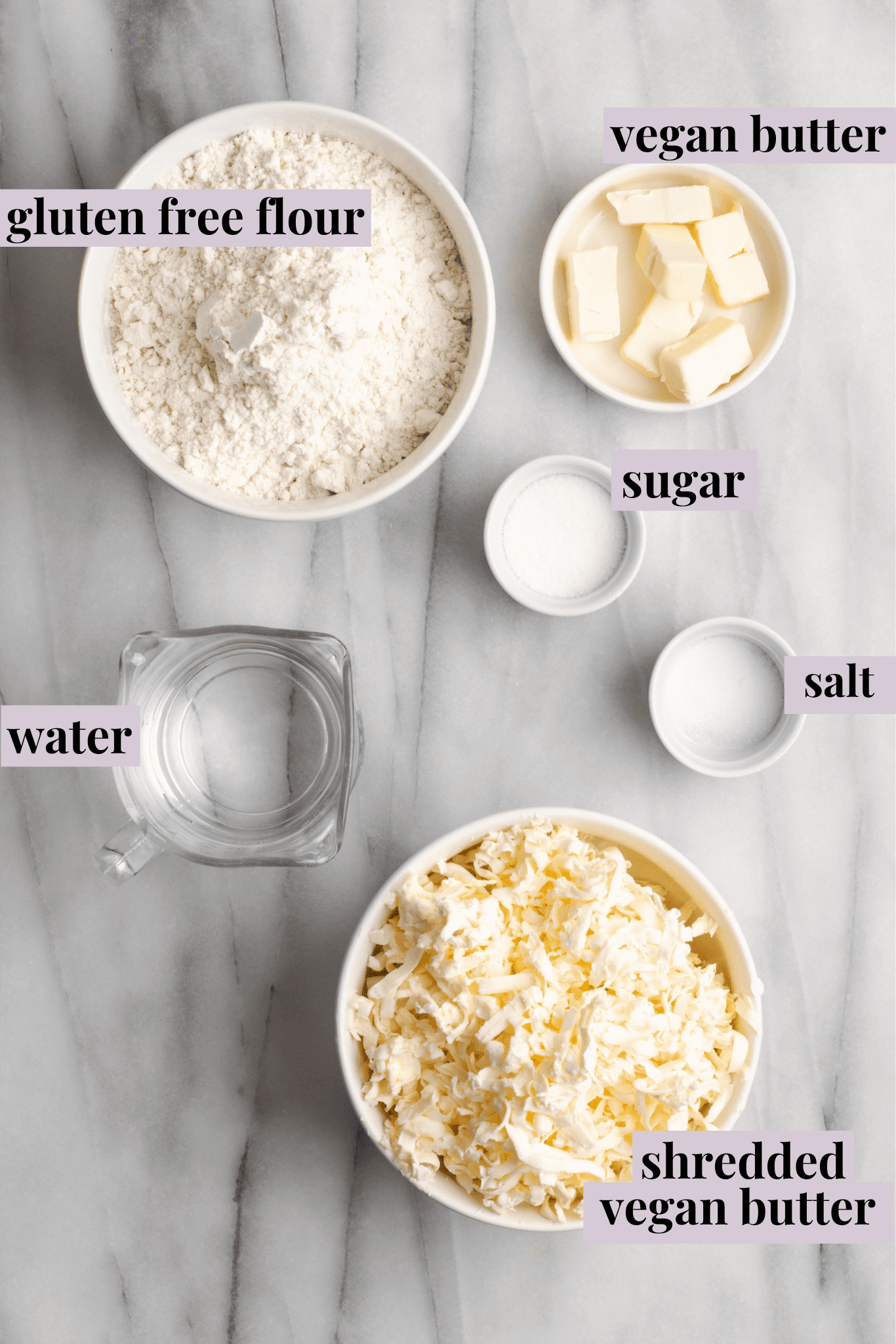
Notes on Ingredients
Here are all the ingredients you need to make this flaky puff pastry dough. Check out the recipe card at the bottom of the article for the exact amounts of each ingredient.
- Gluten-free 1-to-1 flour blend
- Salt
- Sugar
- Vegan butter – You’ll need to cube some of the butter, and shred the rest of it.
- Cold water – Ice water is preferable for this recipe.
What is Gluten-Free 1-to-1 Flour Blend?
Gluten-free 1-to-1 flour blend is just a mixture of gluten-free flours that is designed to replicate all-purpose flour. The “1-to-1” means that it can be used as a direct substitute for all-purpose flour. You don’t need to make any conversions.
How to Make Gluten-Free Vegan Puff Pastry
Here’s how to make this buttery puff pastry dough.
- Mix the dry ingredients. Place the flour, salt, and sugar in a mixing bowl, and stir to combine.
- Add the butter cubes. Put the cold, cubed butter into the flour mixture, and toss to combine. Use a pastry cutter or a fork to break up the butter in the mixture until you’re left with coarse crumbs.

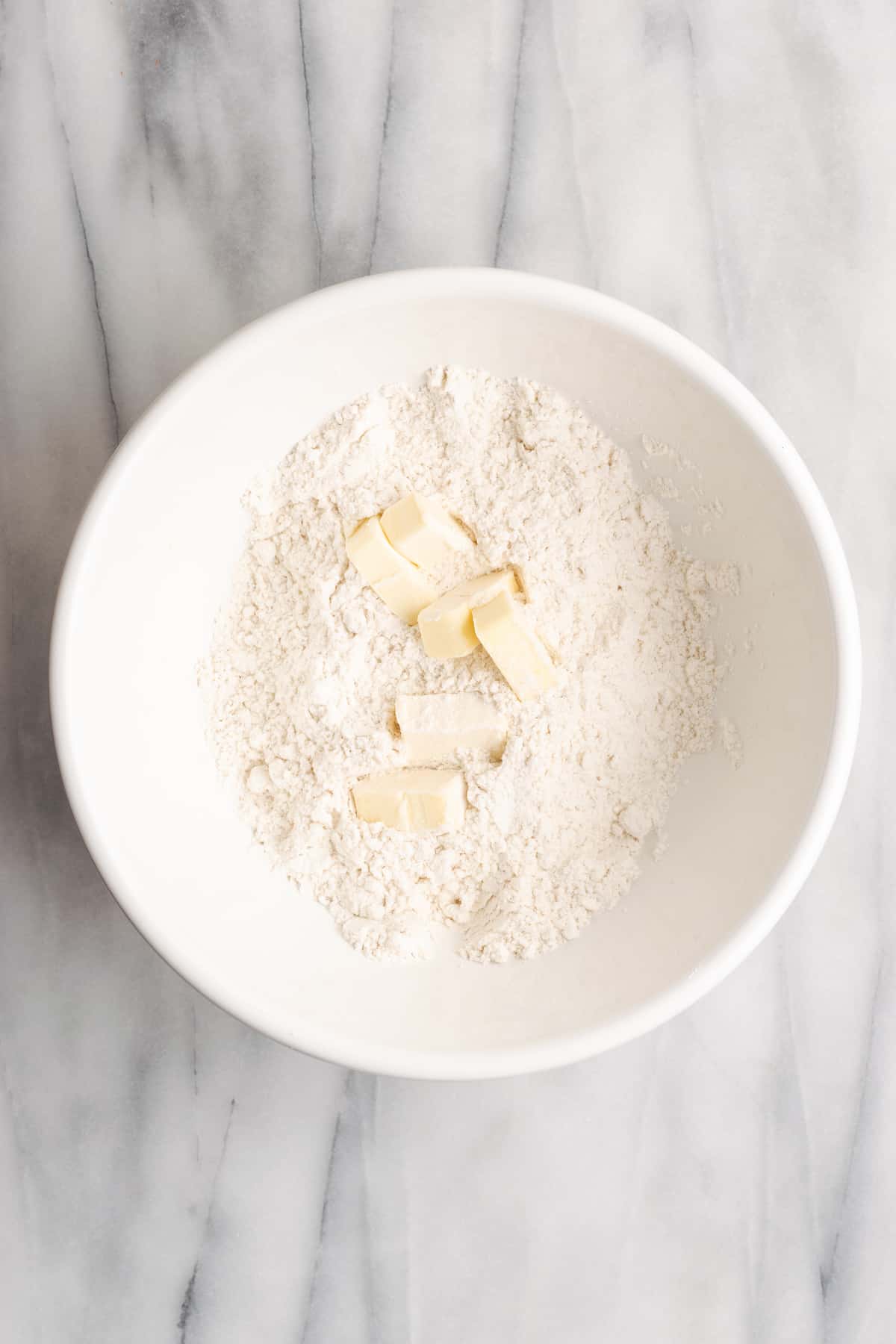
- Add water. Pour half of the cold water into the butter and flour mixture, and mix until combined. Continue adding water until the dough is shaggy and mostly hydrated. The puff pastry dough should be able to hold together, but not feel wet to the touch.
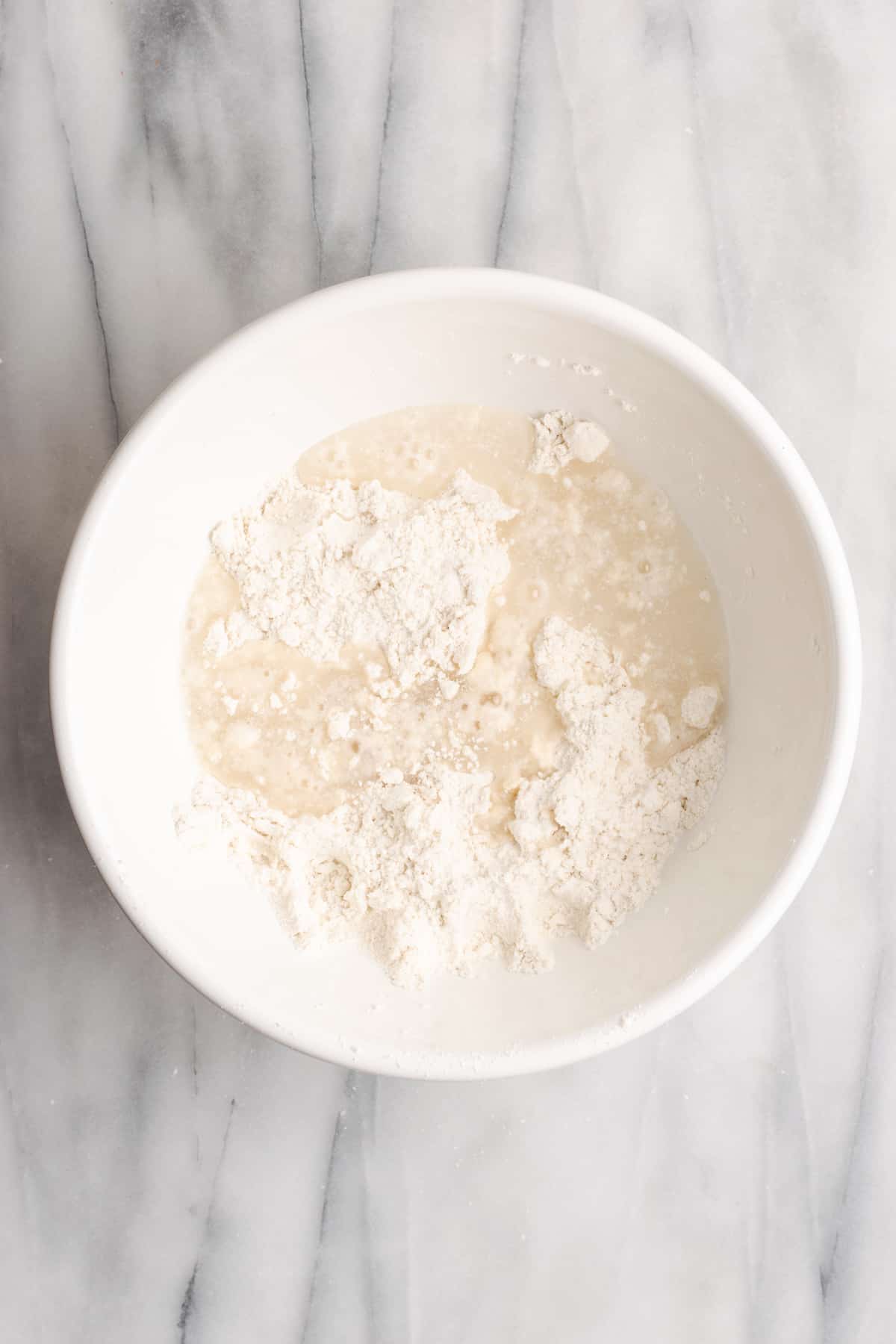

- Knead. Knead the dough until it forms a smooth ball.
- Shape and chill. Shape the dough into a square that’s about an inch thick. Cover it with plastic wrap and store in the fridge for at least an hour.
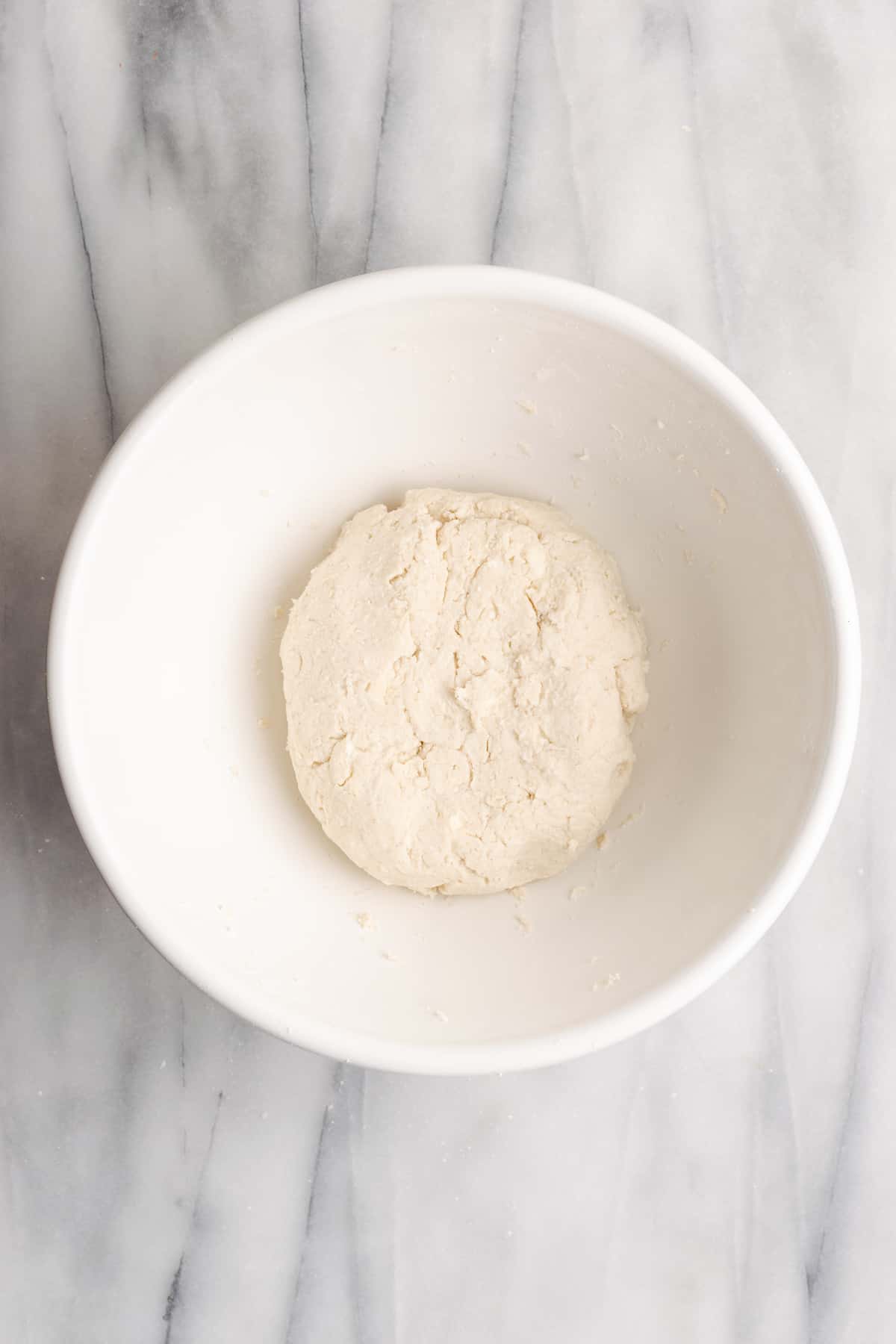

- Grate the butter. Use a cheese grater to shred the butter, then place it in the freezer.
- Roll out the dough. Remove the dough from the fridge, and put it on a lightly-floured surface. Use a rolling pin to roll the dough into a 6×12-inch rectangle.
- Add butter. Add half of the frozen butter onto the dough, spreading it out over ⅔ of the rectangle.
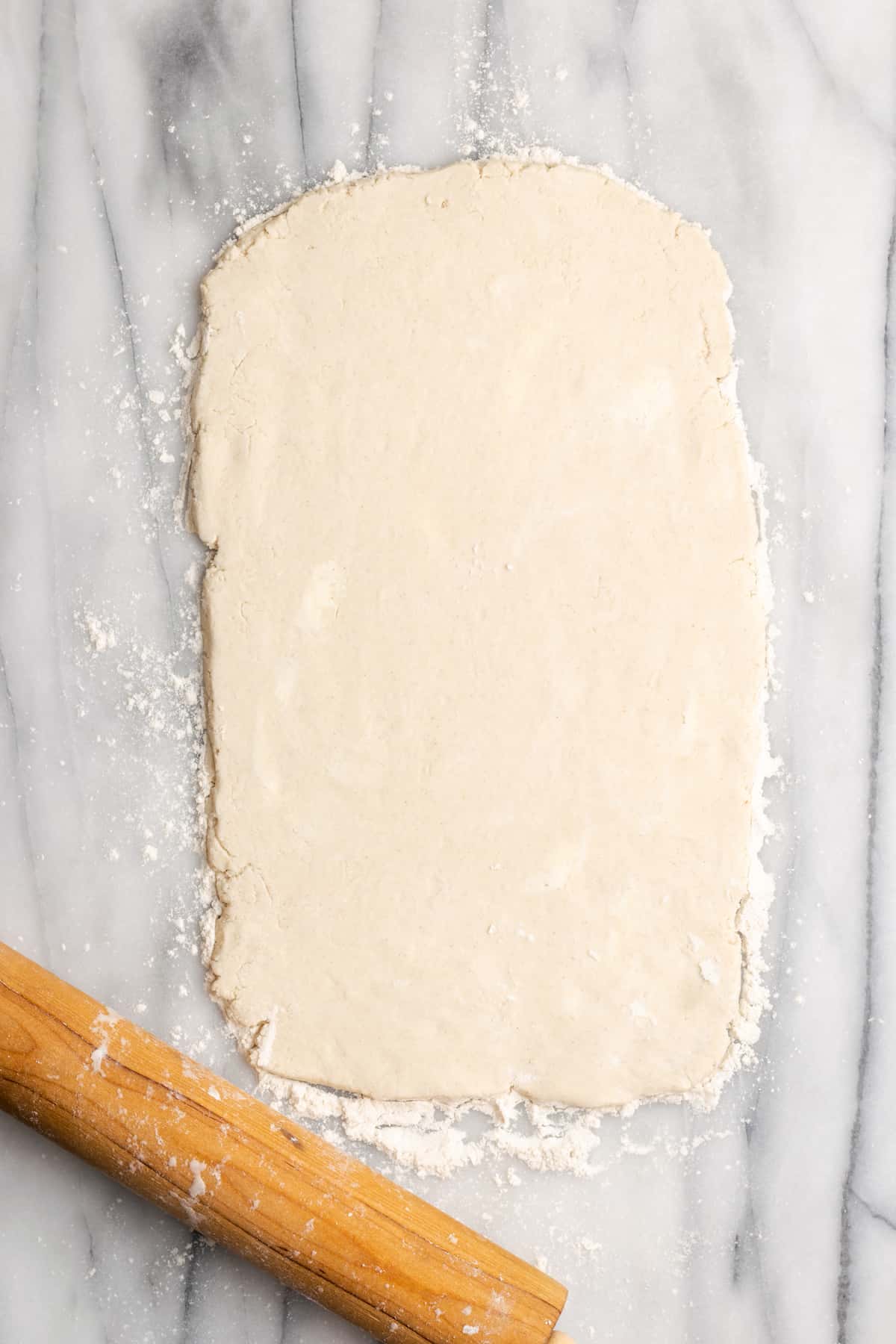
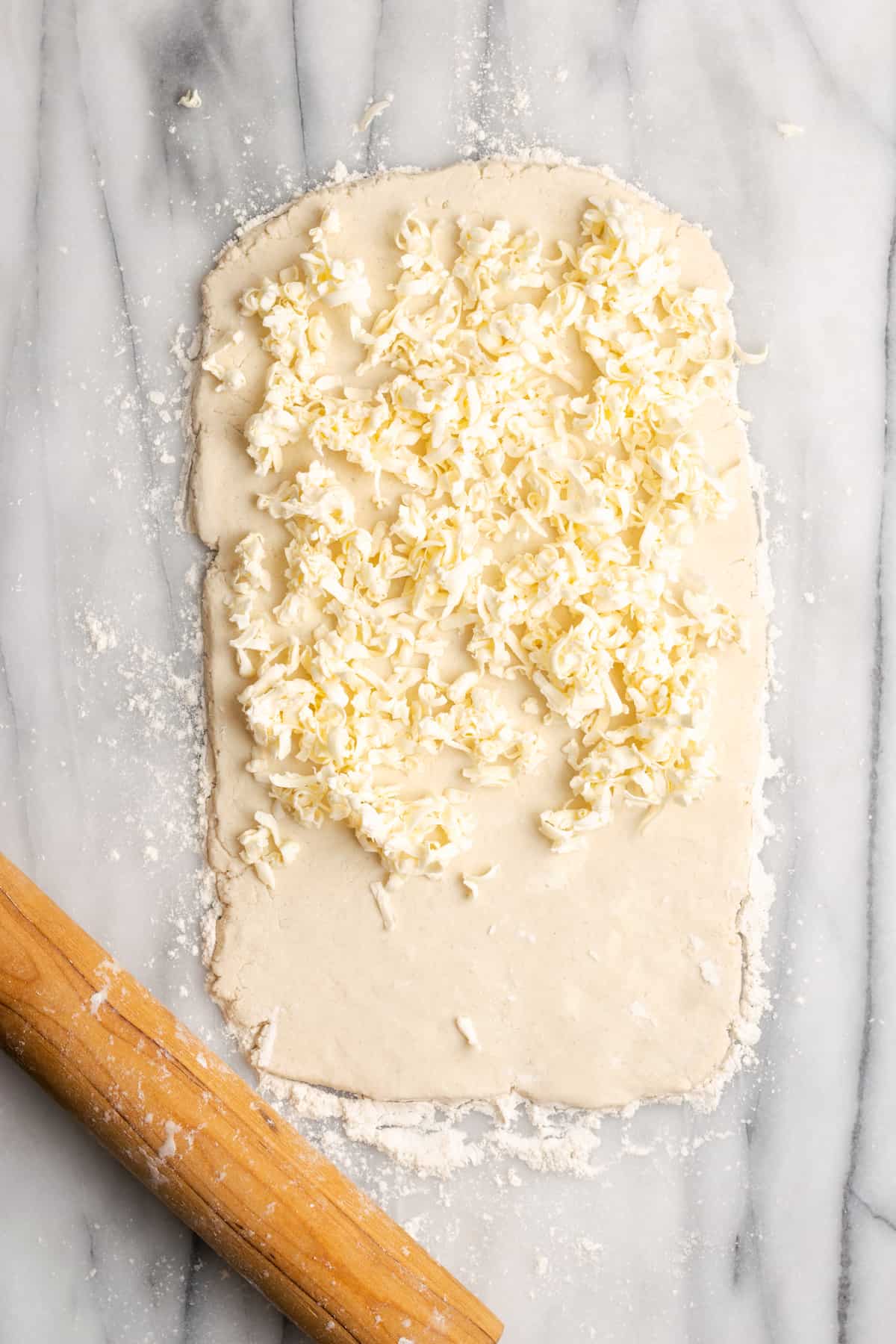
- Fold the dough. Fold the third of the dough that doesn’t have butter on it over the center. Then fold the top third of the dough over, creating three layers.
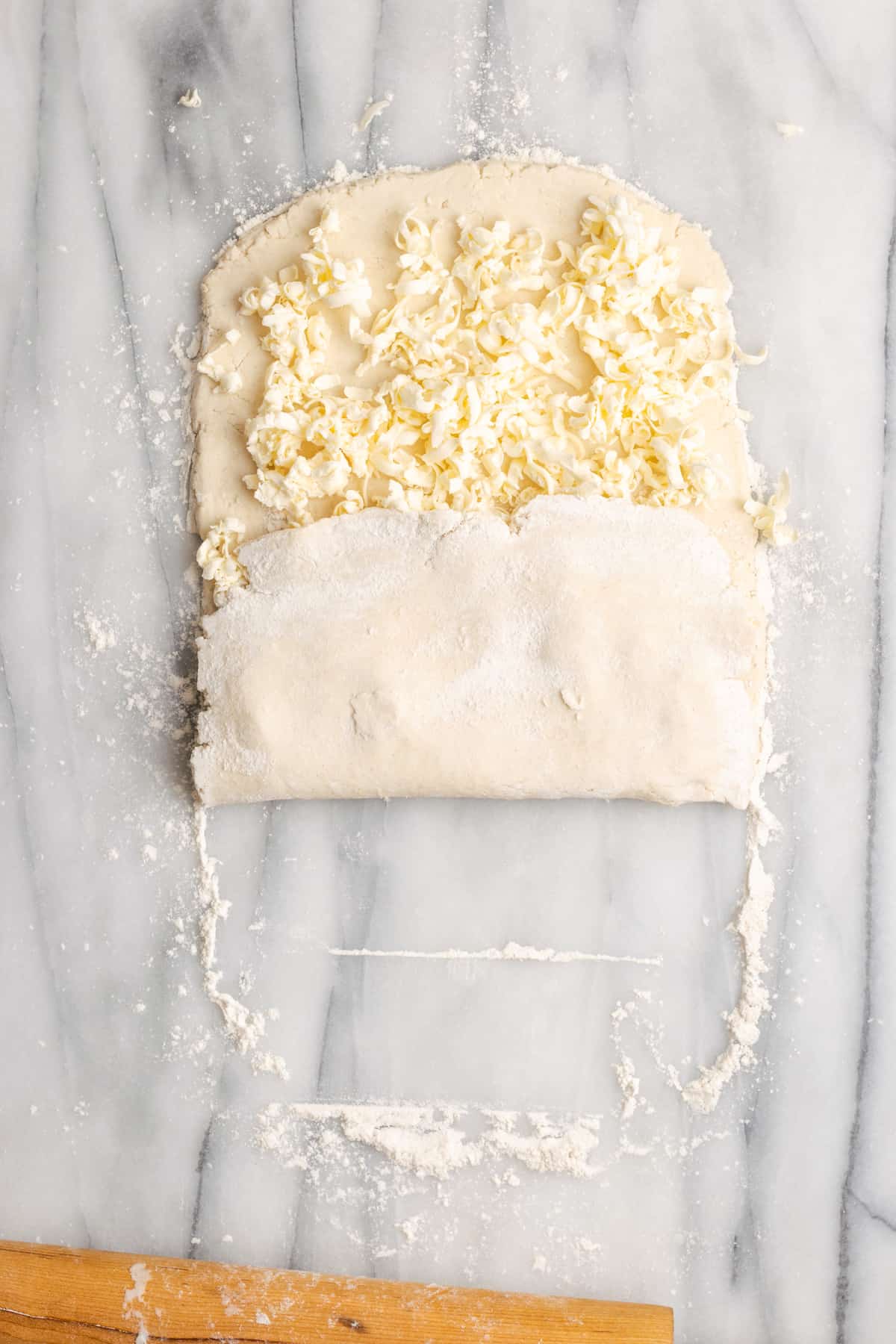
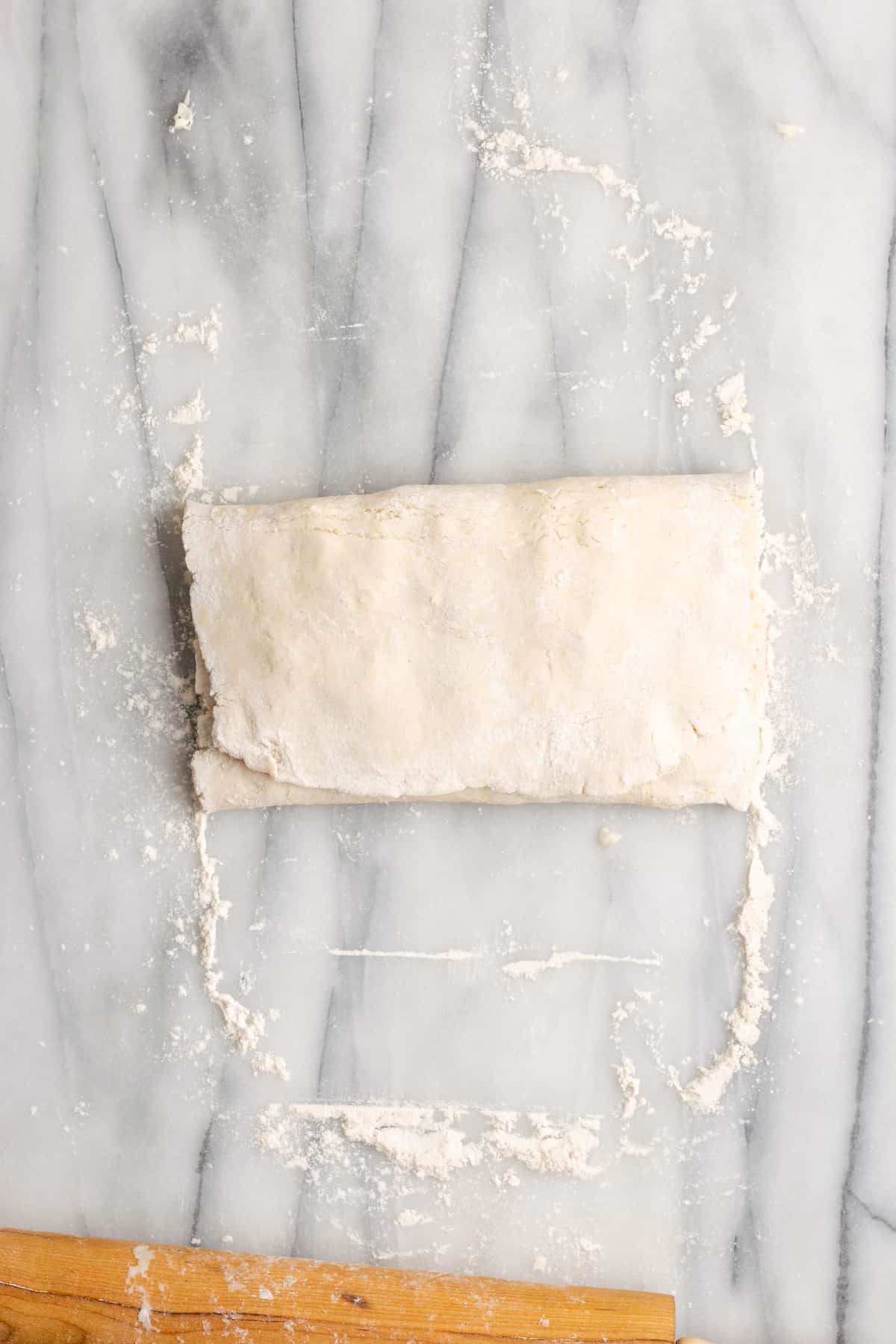
- Roll again. Rotate the pastry puff dough 90 degrees, and roll it out into a 6×12-inch rectangle again.
- Add the rest of the butter. Put the rest of the frozen butter on ⅔ of the rectangle.

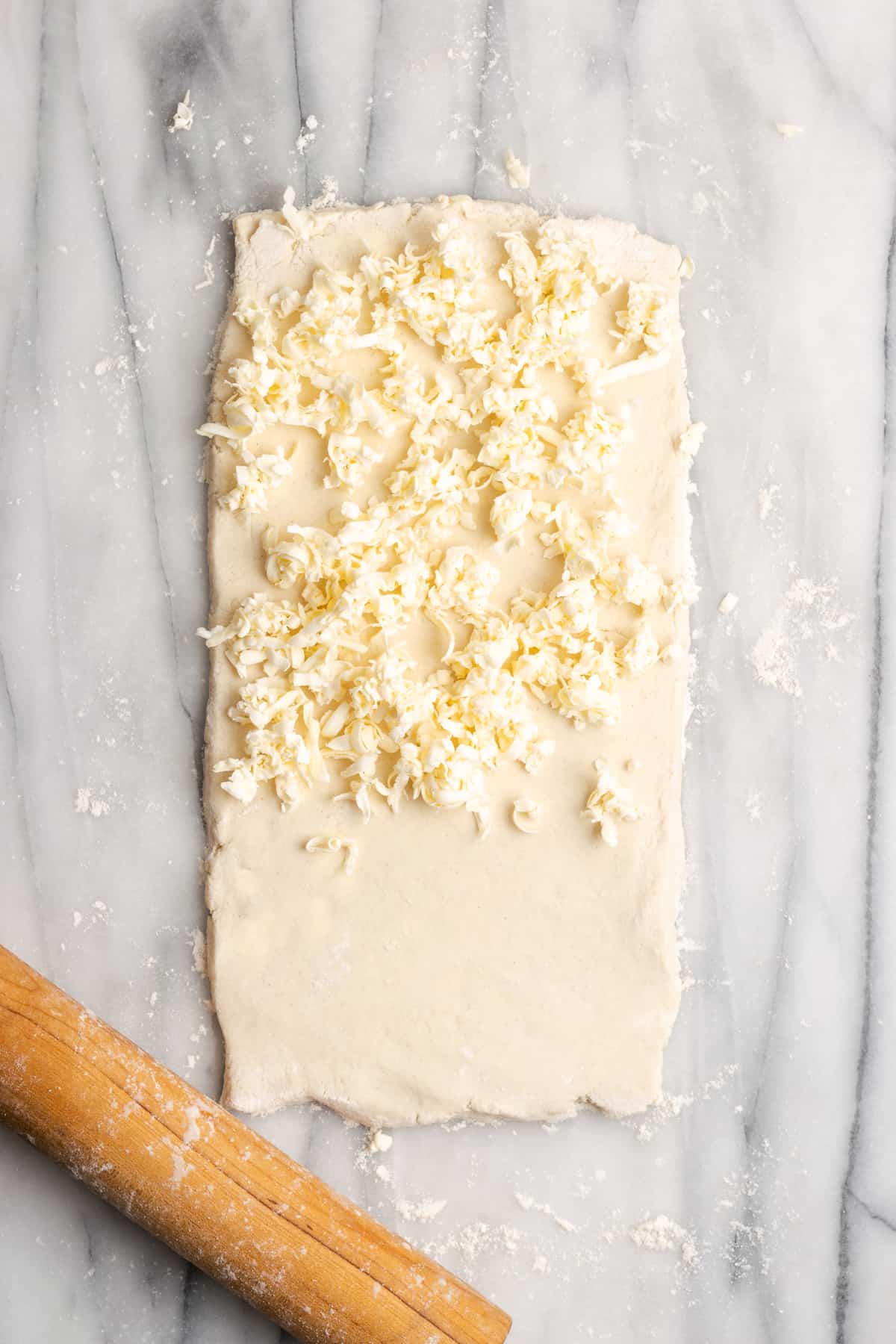
- Repeat the folding process. Go through the same steps to repeat the folding process.
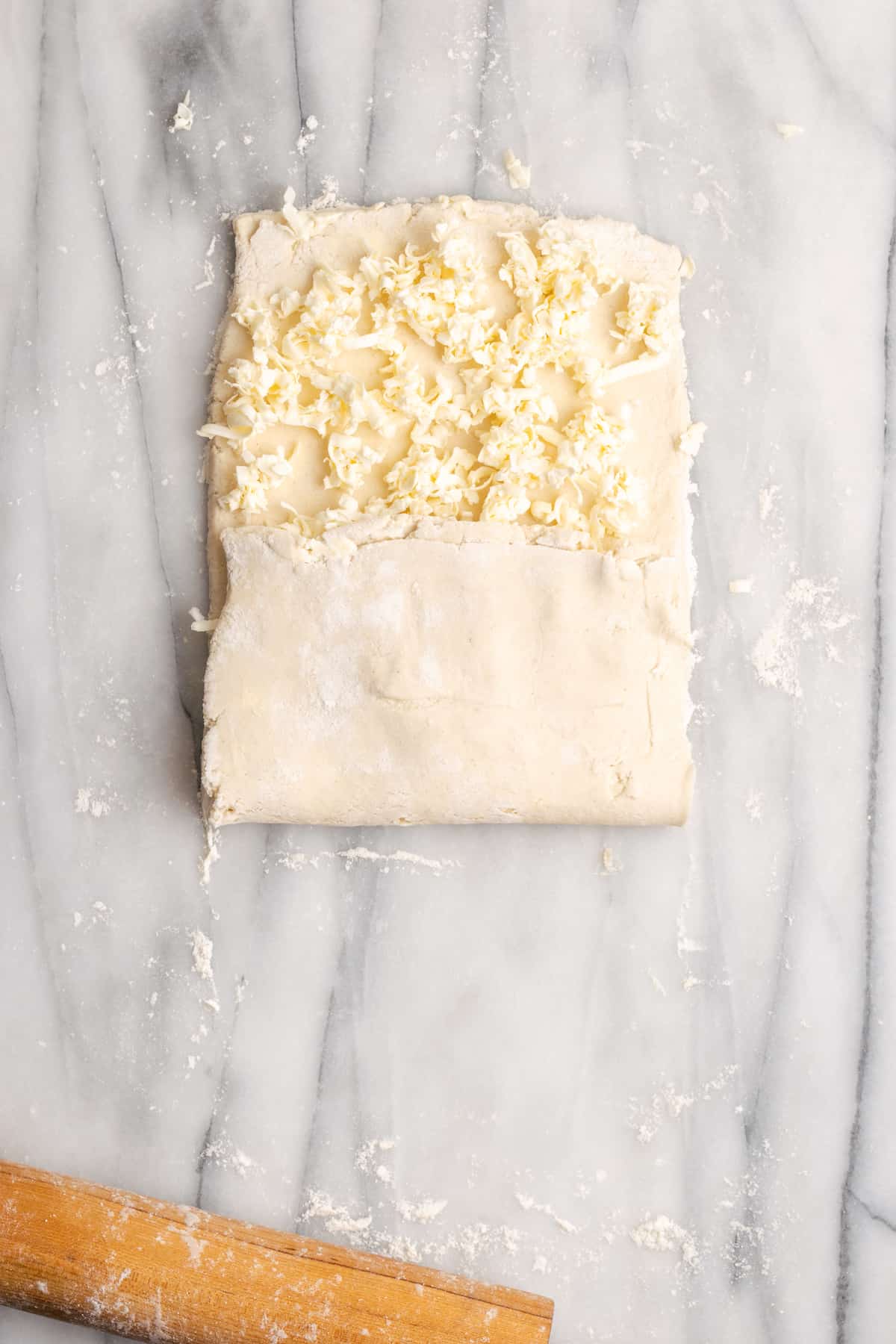
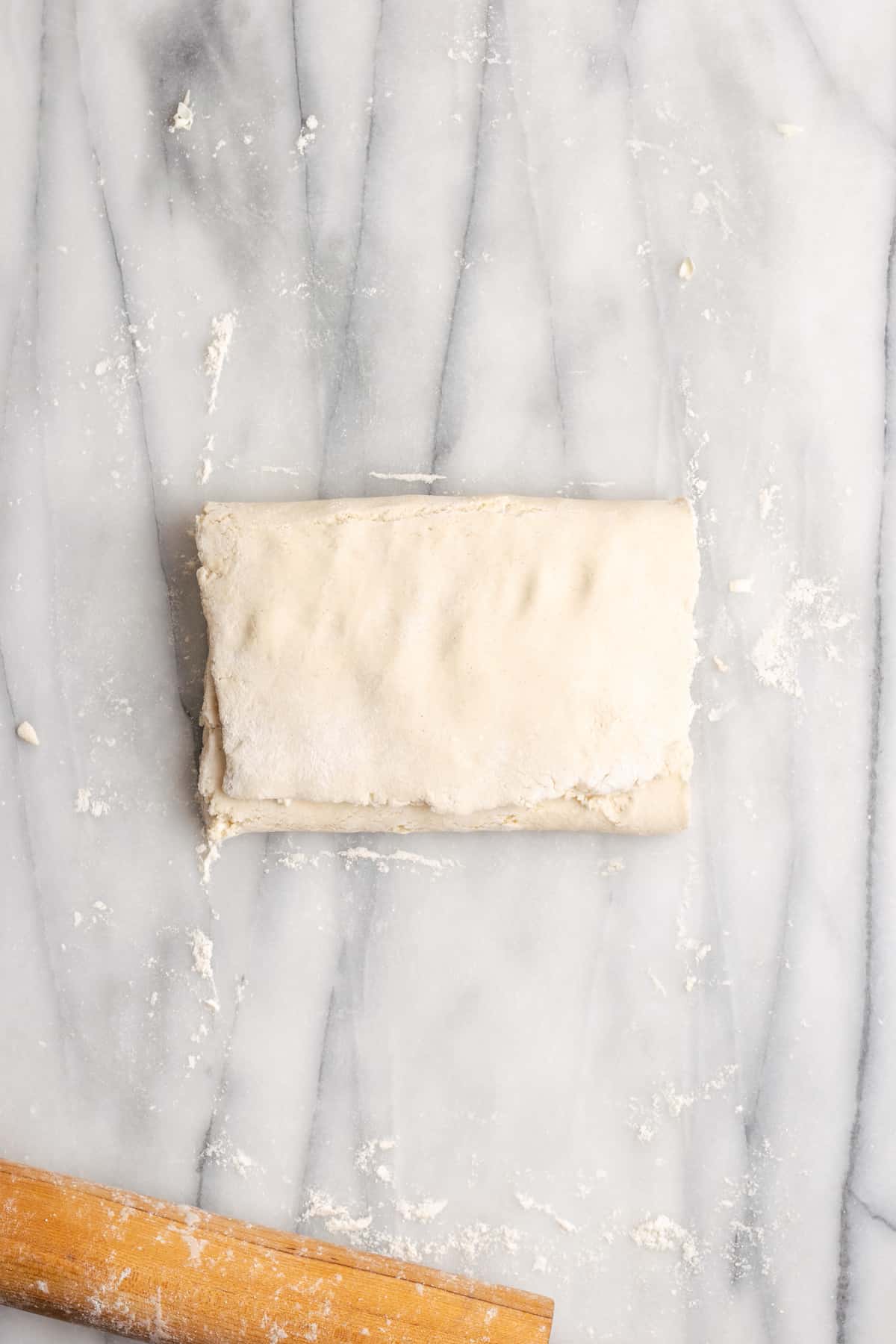
- Chill. Press the dough to seal the edges, then wrap in plastic wrap. Place the dough in the freezer for 15 minutes. Remove the dough from the freezer when it’s cold enough to hold its shape, but not yet frozen.
- Roll the dough twice more. Once again roll the dough into a 6×12-inch rectangle, then do the letter fold again. Rotate the dough 90 degrees, and repeat the process one more time.
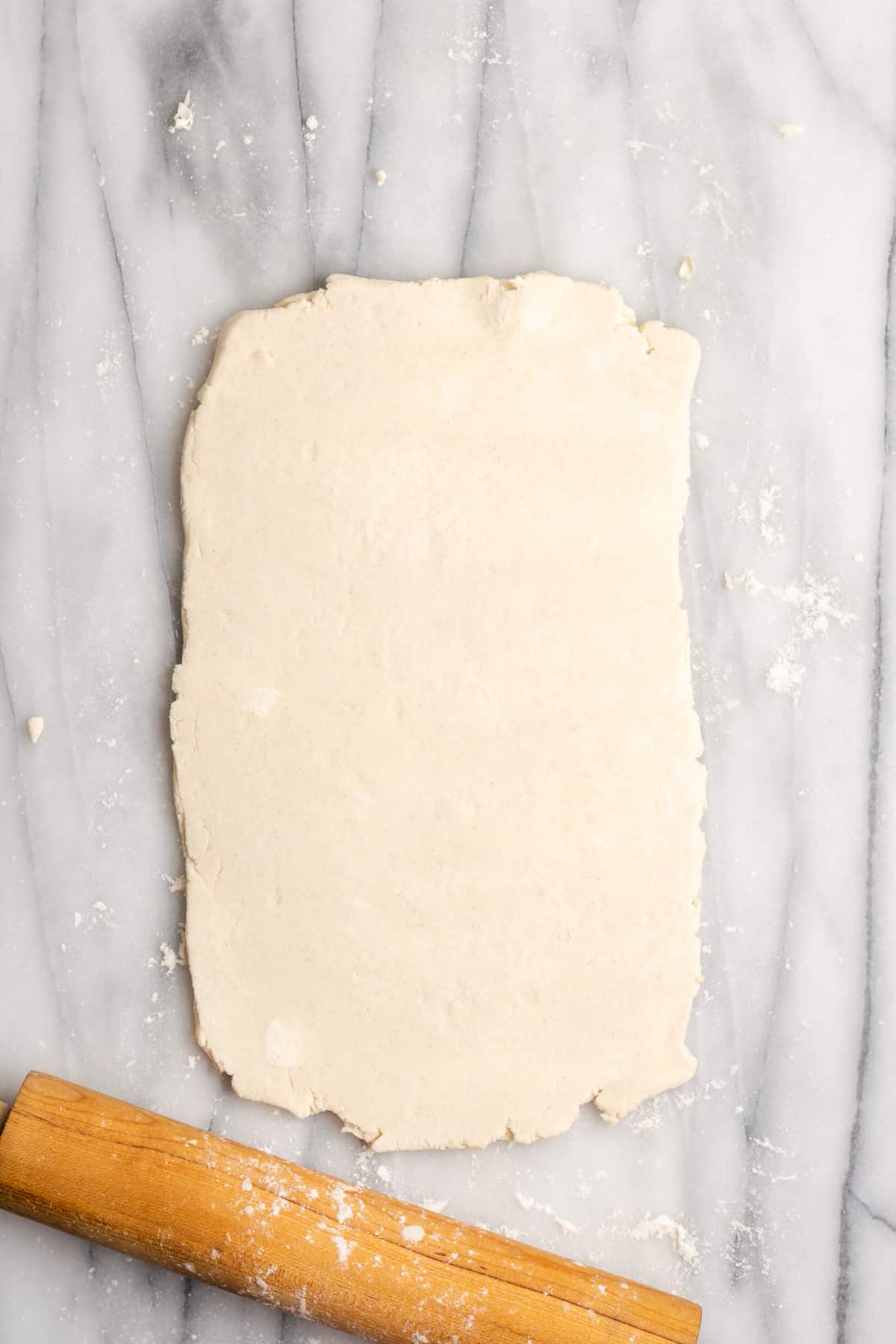
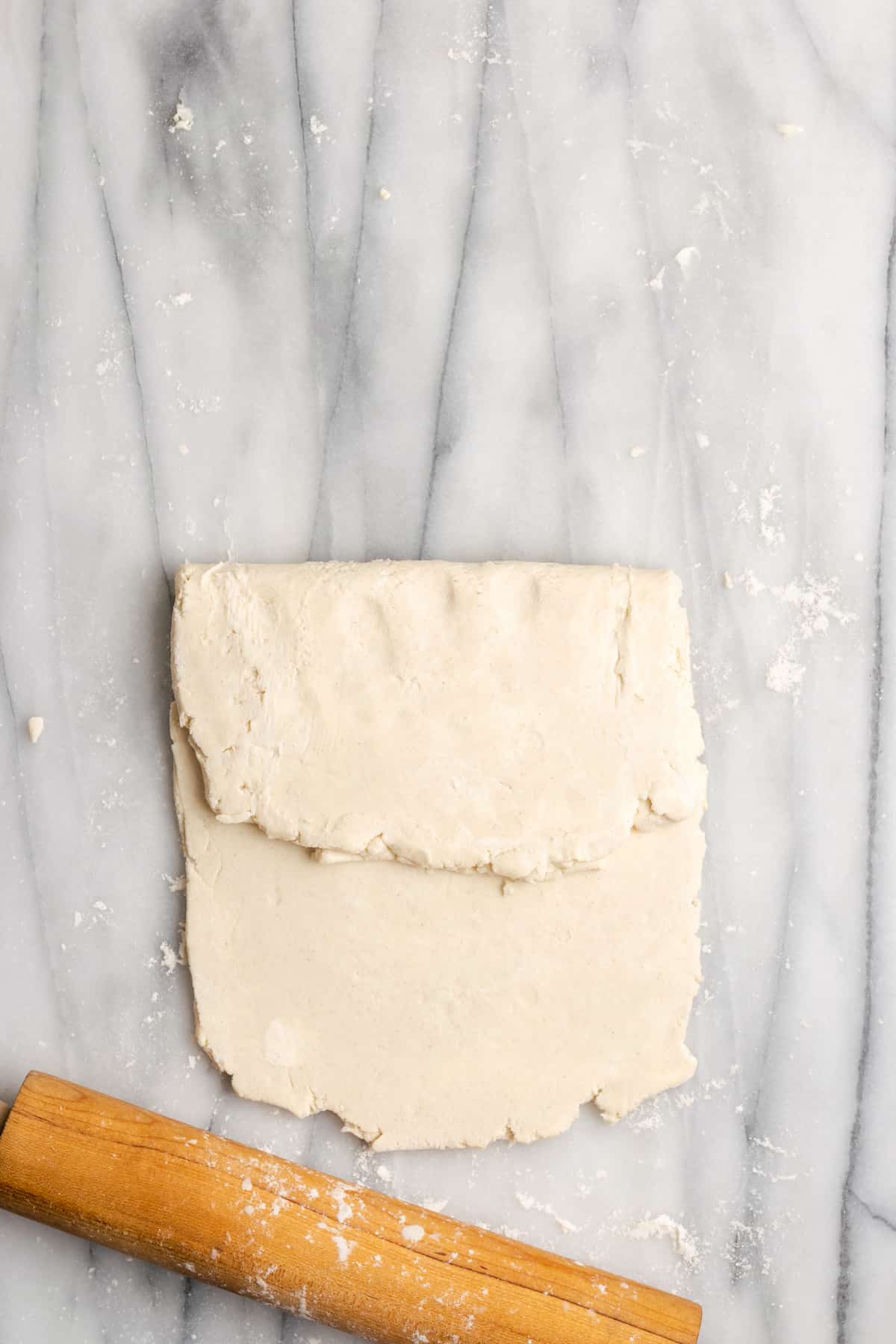
- Chill a final time. Wrap in plastic wrap and freeze for another 15 minutes. Now it’s ready to use! Just be sure to cut off the edges of the dough to reveal the layers, which will make the puff pastry look professional when you bake it.
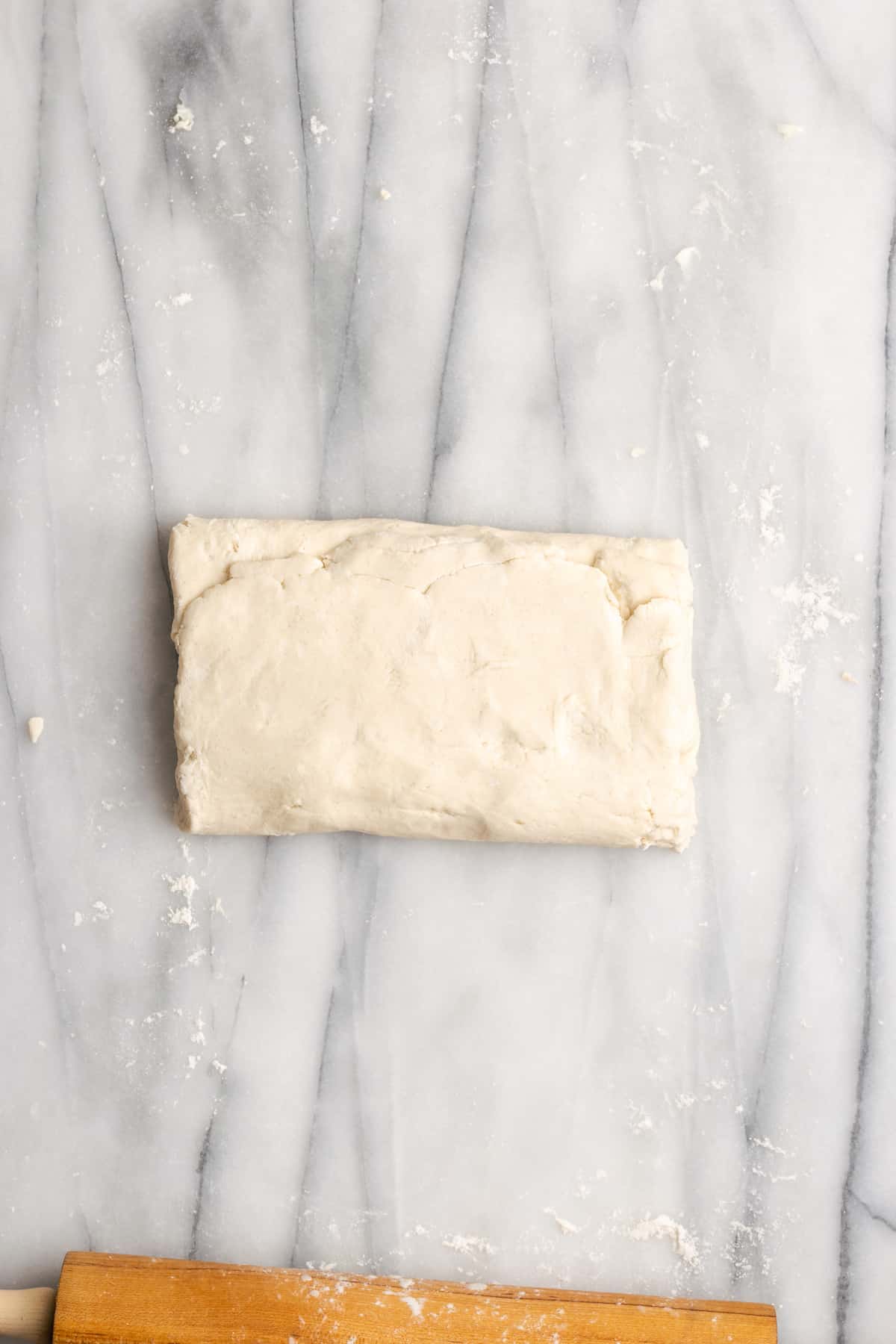
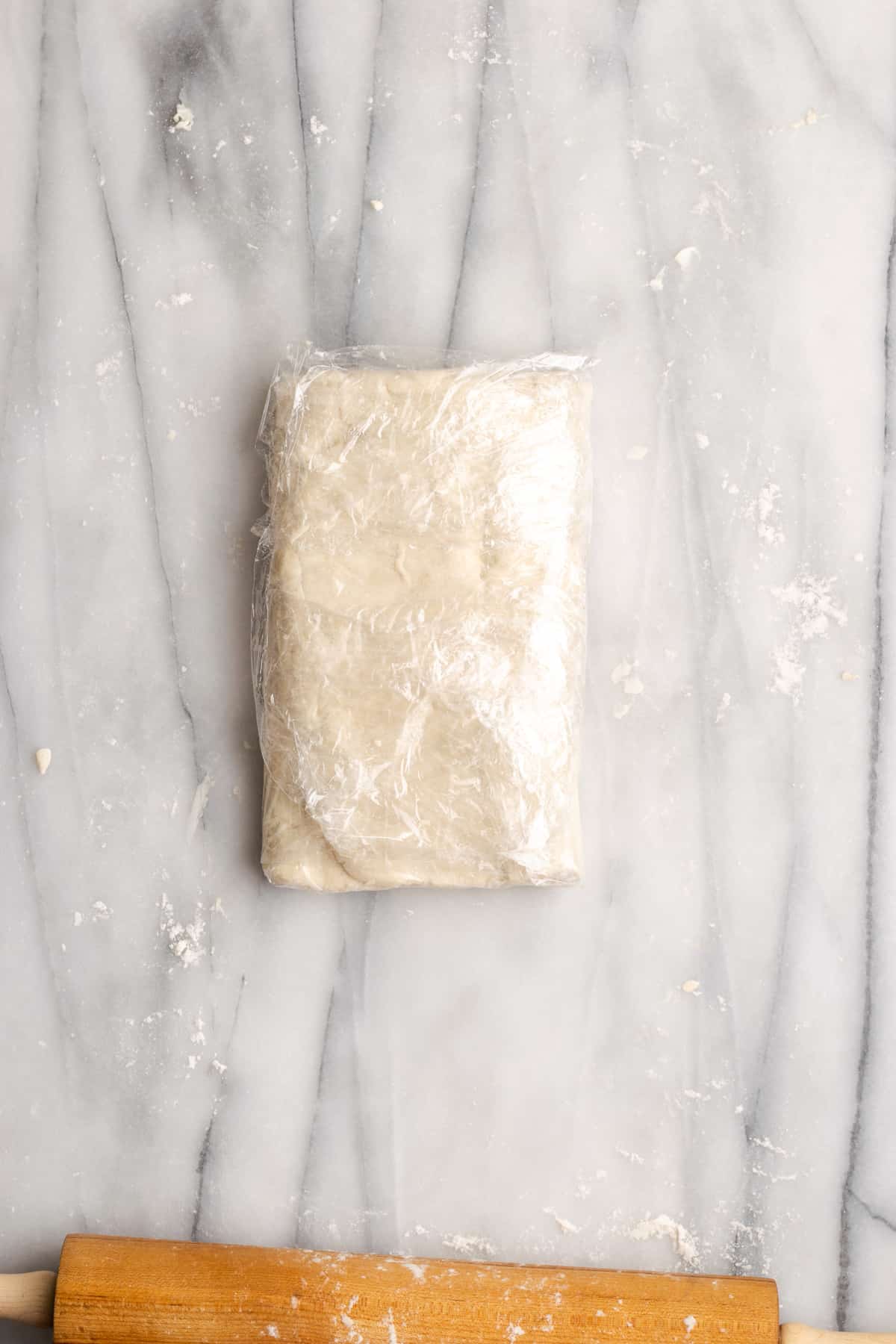
Tips for Success
Here are some of my best tricks and tips for making this gluten-free vegan puff pastry.
- Keep it cold. In order to successfully make puff pastry dough, you have to be able to keep the dough very cold. If the dough becomes sticky or hard to roll at any point in the process, put it in the fridge or freezer until you’re able to work with it again.
- Patch any cracks. Sometimes when rolling out puff pastry dough, it will crack or tear. That’s okay! Just patch it up with some of the dough, and keep working. It will look just fine in the end.
- Know your butter. Different brands of vegan butter have different consistencies when frozen. You want to keep your butter cold when making this recipe, but some non-dairy butters are too hard when frozen, and become impossible to work with. Know what type of butter you’re using, and adjust as you go.
- Re-freeze the puff pastry. Once you use your puff pastry in a recipe, return it to the freezer before baking. Vegan butter melts really easily, so vegan puff pastry dough often becomes too soft very quickly. Place the recipe in the freezer until it’s ready to be baked, then place it straight in the oven.
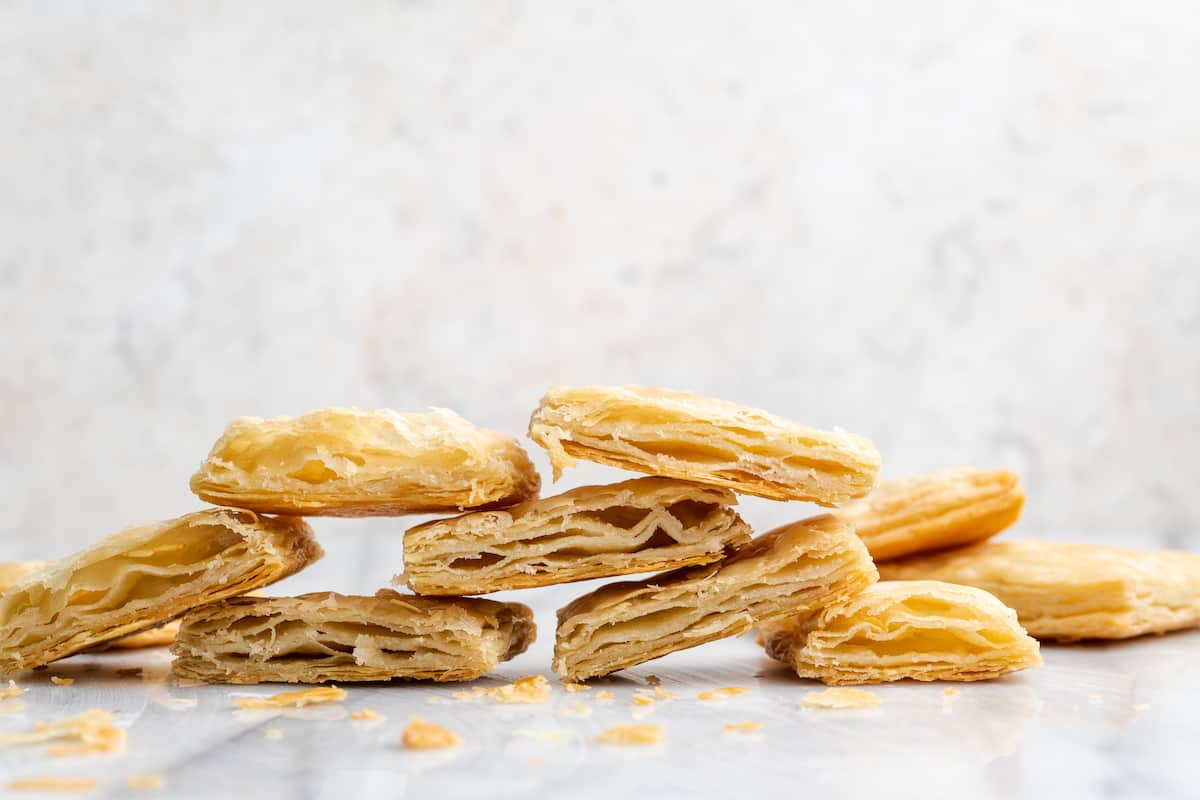
How to Use
There are no shortage of fun and delicious recipes, both sweet and savory, that use puff pastry. I’m a big fan of puff pastry in dinner foods like my vegan wellington recipe, or my vegan pot pies. But this gluten-free puff pastry dough also works wonderfully with sweet recipes, like turnovers, Napoleons, and tarts.
How to Store Gluten-Free Vegan Puff Pastry
You can store the puff pastry in the fridge for up to 2 days. Just store the dough in an airtight container, or wrap it in plastic wrap, then roll out when you’re ready to use it.
Can I Freeze This Recipe?
Puff pastry is normally stored in the freezer, and you can keep this gluten-free vegan puff pastry dough there for up to 3 months. Just wrap the dough in plastic wrap, then place it in an airtight container. Use the dough directly from the freezer.
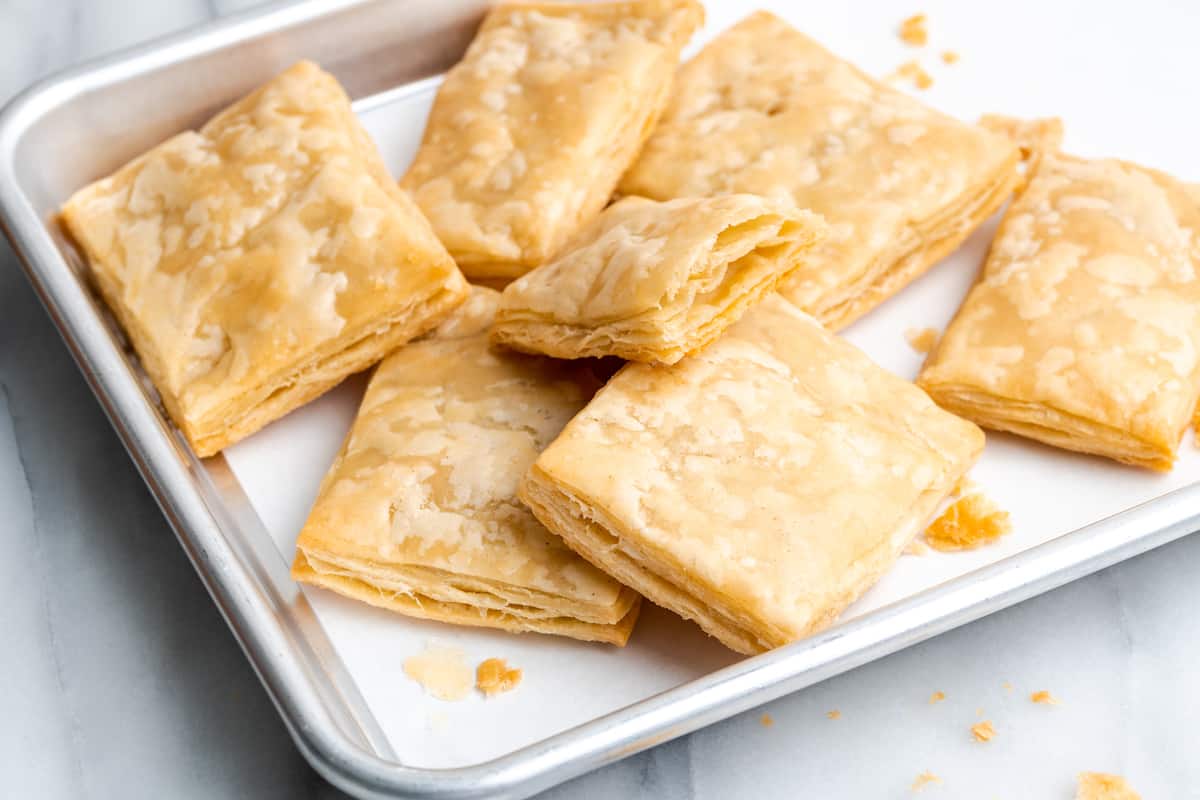
Enjoy friends! If you make this gluten-free vegan puff pastry, please snap a photo and tag #jessicainthekitchen on Instagram! We’d also love it if you would leave a comment below, and give the recipe a rating! Thanks so much!
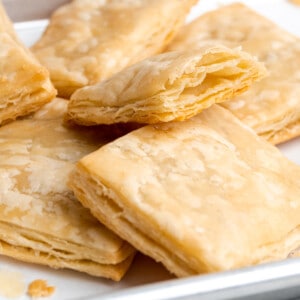
Gluten-Free Vegan Puff Pastry
Ingredients
- 2 cups gluten-free 1-to-1 flour blend, (248 grams)
- ½ teaspoon salt, (3 grams)
- 1 tablespoon sugar, (13 grams)
- 3 tablespoons vegan butter, (42 grams), cold and cut into cubes
- 10 tablespoons vegan butter, (141 grams), frozen and shredded
- ½-⅔ cup ice cold water , (118-156 ml)
Instructions
- Combine the flour, salt and sugar in a large mixing bowl.
- Add the cubed cold butter and toss to coat with flour. Use a fork or pastry cutter to cut the butter into the flour until it resembles coarse crumbs.
- Add half of the cold water to the flour mixture. Toss together to incorporate.
- Add the remaining water a little at a time until you get a shaggy dough that may have a few small bits of dry flour. The dough should be able to hold together but not feel wet.
- Knead the dough a little bit to form a dough ball with a smooth exterior.
- Shape the dough into a square about 1 inch thick and wrap in plastic wrap. Refrigerate for at least 1 hour.
- Use a box grater to shred 10 Tablespoons of vegan butter. Place the shredded butter in the freezer while the dough is chilling.
- Remove the chilled dough from the refrigerator and unwrap. Place on a lightly floured surface. Using a little flour on your rolling pin, roll out to a rectangle about 6 inches by 12 inches.
- Sprinkle half of the frozen butter shreds over the top 2⁄3 of the rolled out dough surface.
- Fold the bottom third of the dough up and over the butter in the center.
- Fold the top third of the dough down and over the first flap, creating a letter fold.
- Rotate the dough 90 degrees and roll out to a rectangle again, 6 inches by 12 inches.
- Repeat the process with the remaining frozen butter. Fold the dough into another letter fold. Press down on the dough a little to seal the edges. Wrap the dough in plastic wrap and place in the freezer for 15 minutes.
- Remove the chilled dough from the freezer. It should be cold, but not frozen. The dough needs to be stiff enough that it doesn’t sag when you hold it.
- Remove the plastic wrap and roll the dough out to a 6 inch by 12 inch rectangle. Repeat the letter fold, folding the bottom third up first and then folding the top third down. Rotate and repeat for a second letter fold.
- Wrap the dough in plastic wrap and freeze for another 15 minutes.
- After the second chill, the dough is ready to use. If you’re not going to use it right away you can move it from the freezer to the refrigerator and store for 1-2 days. Or roll the dough out to 1⁄4” thick and wrap well with plastic wrap. Place in a freezer bag and freeze for later use.
- Before using, cut about 1⁄4” inch off the edges of the dough to reveal the layers, this will create the puff pastry look when baked.
- Freeze dough or pastries before baking to keep the dough really cold.
Notes
Disclaimer: Although jessicainthekitchen.com attempts to provide accurate nutritional information, kindly note that these are only estimates. Nutritional information may be affected based on the product type, the brand that was purchased, and in other unforeseeable ways. Jessicainthekitchen.com will not be held liable for any loss or damage resulting for your reliance on nutritional information. If you need to follow a specific caloric regimen, please consult your doctor first.




Sounds absolutely brilliant. I have not tried it yet, but am looking forward to making a phyllo-like Greek pie, and an apple strudel. Thank you Jessica! <3
You’re so welcome Tracy!!
Just wanted to say a big thank you, the recipe saved our Christmas main (Mushroom Wellington) as everywhere was out of GF pre made pastry. Honestly totally worth the effort and tastes amazing!!
Sooo happy to hear Tahmina!! Thanks for sharing !!
Will this work with ghee?
hi Eileen,
I haven’t tried it but it should!
Hi! I just prepared this dough today and I’m SUPER excited to bake with it in the morning. I’m going to make gf vegan cream cheese & blackberry danishes 😍
But I do have some questions. First off, should I shred the butter BEFORE I freeze it? I froze it first and I’m worried that the shreds were too thin and melted too quickly. (We’ll see if this mattered tomorrow morning).
Another question is, as I was folding it the last few times – the dough cracked on the outside of the folded spots. I just sealed it back up but it definitely seemed to mess up the “layering” in those spots. Do you think this will impact the end result?
Thank you so much for this! I used Bobs 1:1 baking flour, Miyoko’s butter and coconut sugar! 🙂 I’ll come back and update how the danishes turn out.
HI Ellie,
I hope it worked so well for you! I have frozen then shredded and shredded then frozen so either works! The slight cracks should only affect visuals not actual layers! Hope this helps!!
What brand of butter have you had success with!
Hi Virginia,
I’ve had success with Earth Balance vegan butter sticks!
Good evening,
Thank you for sharing your recipe.
What temperature and for how long do I cook the pastry for?
Hi Jacqueline,
Usually it’s in accordance with the recipe you’re using it for by the way! But for my pumpkin pop tarts for example I did 400 for 20 minutes and that worked great!
Can’t wait to try this! What GF flour do you use with this recipe?
Hi Tasha,
I’ve tested Bob’s Red Mill 1:1 Gluten Free flour in the blue bag the most successfully! Caputo’s Gluten Free Flour (If you’re not allergic to actual wheat but are allergic to gluten, it contains gluten free wheat starch and is celiac tested once your allergies isn’t to wheat) will give you the closest result to real flour!
Hi…can I adapt these into Palmiers by adding sugar into the last folding and on the surface that they’re rolled on, like regular sugar Palmiers, then slicing them into individual slices? That was certainly a run-on question!
Thanks for your input.
Hi Karen,
Yes for sure! I actually have a palmiers blog post that uses this! Just use the search bar to find it please (I can’t post links here unforutunately). Enjoy so much and Happy Holidays!
This turned out soo great! I’m using it to make a gluten and dairy free mille feuille, and I can’t wait to put it all together. The puff pastry came out nice and crispy, and it tastes soo good. Thank you for this recipe!!
SO happy to hear this Shelby – that’s amazing yay!! You’re so incredibly welcome!